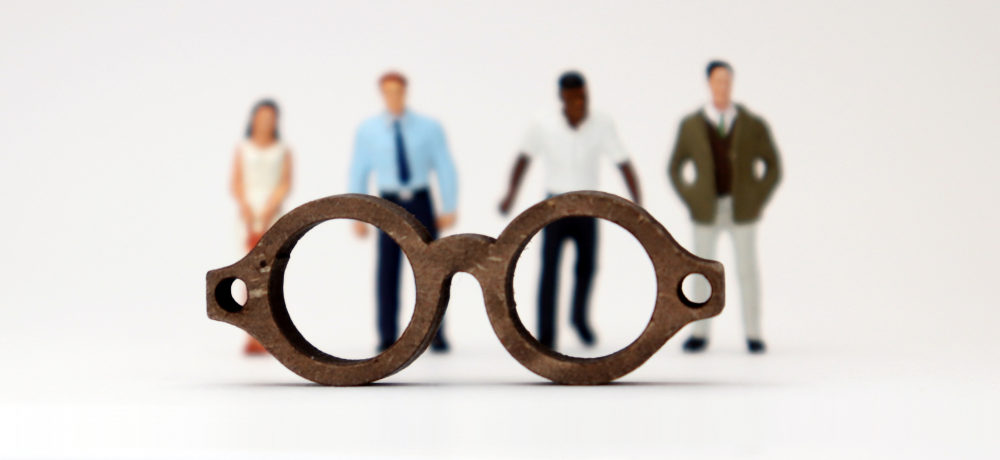We all have bias, whether we are actively aware of how it effects our decision-making or not. It is essential to recognize bias in ourselves and others so that we may be conscious of our intentions. We at J&J want to provide strategies to become more aware of one’s individual biases and healthy ways to respond to them. We also want to discuss how these biases might extend into our everyday work and ways it can be addressed, especially in the scholarly publishing industry.
What Is Unconscious Bias?
Bias: a prejudice in favor of or against one thing, person, or group compared with another, usually in a way that’s considered to be unfair.
Conscious bias (also known as explicit bias): something you are aware of and that you express directly.
Ex. “Women are too emotional to be president.”
Unconscious bias (also known as implicit bias): bias that you are not aware of and often express indirectly.
Ex. Clutching your purse when you walk past a homeless person.
Unconscious biases are social stereotypes about certain groups of people that individuals form outside their own conscious awareness. Everyone holds unconscious beliefs about various social and identity groups, and these biases stem from one’s tendency to organize social worlds by categorizing.
While we constantly have to work to become more aware of our implicit biases, being “courteous” to coworkers who are different than us does not prevent us from acting out of our unconscious biases. Working to realize and overcome the biases we have helps us to actually see and care for the individuals around us, which helps to discourage toxicity (and worse, blatant prejudice) in the workplace.

Recognizing Bias
There are multiple ways we can recognize unconscious bias in the workplace. First, we can analyze hiring practices and see if they are encouraging diversity (e.g., addressing name biases in resume review). For performance evaluations and promotion processes, we can see if there are standardized criteria to evaluate employees instead of comparing employees against each other.
Corporate involvement in addressing bias has multiple benefits:
- Standardizes the process for how to address moments of unconscious bias in the workplace
- Helps employees feel empowered to address these moments when they arise, because they know they have the support of the company
- Diverts the burden of noting and addressing bias away from marginalized groups, who traditionally bear the majority of this burden and yet suffer punishment for speaking out
Another essential step is to work to recognize unconscious bias in ourselves. We can use self-reflection/awareness to slow down decision-making and analyze where our thought processes are stemming from. Using tools like Project Implicit is a great way to approach retraining your brain.
Very important too is the “fundamental attribution error”: the belief that, while our own actions can be explained by circumstances (e.g., I yelled at a colleague because I had a stressful day), others’ behaviors are explained by their personalities and dispositions (e.g., he yelled at a colleague because he is a bully). Experiencing fundamental attribution error can be triggered by things like tiredness, lack of food, etc. Literally taking care of ourselves can help avoid unconscious bias throughout our day.

Finally, we can educate ourselves on our unconscious biases by reading more about it and continuing the process of self-reflection. There are many tools recommended by the D&I advisory council and found online that we can all use to learn more about unconscious bias in order to continue our education on how to uncover and therefore avoid our unconscious bias.
Addressing Unconscious Bias
“Unconscious bias training is the beginning of the process, not the end.”
We all bear a personal responsibility to recognize and address our own biases. This process should be regarded as an opportunity for learning and personal growth and does not need to involve shaming or blaming oneself or another person. Individual action should center around the following:
- Generalized mindfulness of one’s daily attitudes and actions to uncover one’s own biases without needing a third party to point them out
- Awareness of how one responds to critique
- Communicating openly with supervisors and managers to ensure that one’s actions comply with company standards
We at J&J are committed to diversity within the workforce and the scholarly publishing community and creating a supportive environment for individuals to learn and grow. We have already begun the process of identifying and addressing unconscious bias in our workplace, though many of these goals are not yet fully realized. We intend to continually re-evaluate and update these goals as needed.
Addressing unconscious bias is not a singular event, but rather an ongoing process that we must commit to as we work to improve our workplaces and relationships over time.
This article is based on an internal presentation by our Professional Development Committee and included contributions from Kellyanna Atwell, Margaret Graton, Catie Sharpe, Erin Valentine, Tasha Wilhelmsen, Sarah Wolper, and Cat Wyatt.
